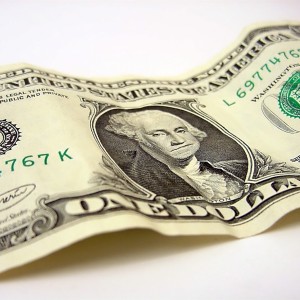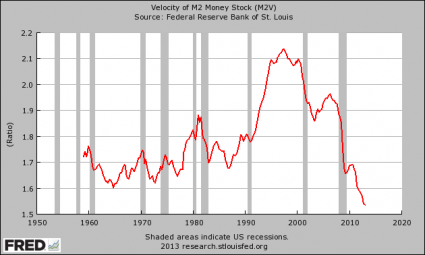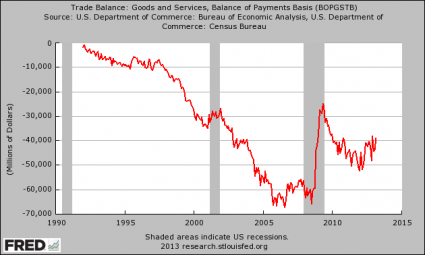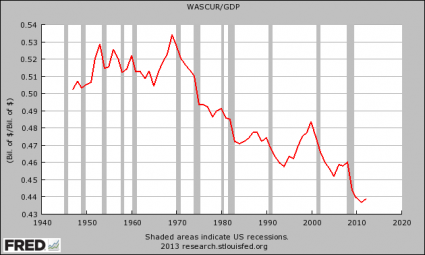 Can you smell that? It is the smell of panic in the air. As I have noted before, when financial markets catch up to economic reality they tend to do so very rapidly. Normally we don’t see virtually all asset classes get slammed at the same time, but the bucket of cold water that Federal Reserve Chairman Ben Bernanke threw on global financial markets on Wednesday has set off an epic temper tantrum. On Thursday, U.S. stocks, European stocks, Asian stocks, gold, silver and government bonds all over the planet all got absolutely shredded. This is not normal market activity. Unfortunately, there is nothing “normal” about our financial markets anymore. Over the past several years they have been grossly twisted and distorted by the Federal Reserve and by the other major central banks around the globe. Did the central bankers really believe that there wouldn’t be a great price to pay for messing with the markets? The behavior that we have been watching this week is the kind of behavior that one would expect at the beginning of a financial panic. Dick Bove, the vice president of equity research at Rafferty Capital Markets, told CNBC that what we are witnessing right now “is not normal. It is not normal for all markets to move in the same direction at the same point in time due to the same development.” The overriding emotion in the financial world right now is fear. And fear can cause investors to do some crazy things. So will global financial markets continue to drop, or will things stabilize for now? That is a very good question. But even if there is a respite for a while, it will only be temporary. More carnage is coming at some point.
Can you smell that? It is the smell of panic in the air. As I have noted before, when financial markets catch up to economic reality they tend to do so very rapidly. Normally we don’t see virtually all asset classes get slammed at the same time, but the bucket of cold water that Federal Reserve Chairman Ben Bernanke threw on global financial markets on Wednesday has set off an epic temper tantrum. On Thursday, U.S. stocks, European stocks, Asian stocks, gold, silver and government bonds all over the planet all got absolutely shredded. This is not normal market activity. Unfortunately, there is nothing “normal” about our financial markets anymore. Over the past several years they have been grossly twisted and distorted by the Federal Reserve and by the other major central banks around the globe. Did the central bankers really believe that there wouldn’t be a great price to pay for messing with the markets? The behavior that we have been watching this week is the kind of behavior that one would expect at the beginning of a financial panic. Dick Bove, the vice president of equity research at Rafferty Capital Markets, told CNBC that what we are witnessing right now “is not normal. It is not normal for all markets to move in the same direction at the same point in time due to the same development.” The overriding emotion in the financial world right now is fear. And fear can cause investors to do some crazy things. So will global financial markets continue to drop, or will things stabilize for now? That is a very good question. But even if there is a respite for a while, it will only be temporary. More carnage is coming at some point.
What we have witnessed this week very much has the feeling of a turning point. The euphoria that drove the Dow well over the 15,000 mark is now gone, and investors all over the planet are going into crisis mode. The following is a summary of the damage that was done on Thursday…
-U.S. stocks had their worst day of the year by a good margin. The Dow fell 354 points, and that was the biggest one day drop that we have seen since November 2011. Overall, the Dow has lost more than 550 points over the past two days.
-Thursday was the eighth trading day in a row that we have seen a triple digit move in the Dow either up or down. That is the longest such streak since October 2011.
-The yield on 10 year U.S. Treasuries went as high as 2.47% before settling back to 2.42%. That was a level that we have not seen since August 2011, and the 10 year yield is now a full point above the all-time low of 1.4% that we saw back in July 2012.
– The yield on 30 year U.S. Treasuries hit 3.53 percent on Thursday. That was the first time it had been that high since September 2011.
-The CBOE Volatility Index jumped 28 percent on Thursday. It hit 20.49, and this was the first time in 2013 that it has risen above 20. When volatility rises, that means that the markets are getting stressed.
-European stocks got slammed too. The Bloomberg Europe 500 index fell more than 3 percent on Thursday. It was the worst day for European stocks in 20 months.
-In London, the FTSE fell about 3 percent. In Germany, the DAX fell 3.3 percent. In France, the CAC-40 fell 3.7 percent.
-Things continue to get even worse in Japan. The Nikkei has fallen close to 17 percent over the past month.
-Brazilian stocks have fallen by about 15 percent over the past month.
-On Thursday the price of gold got absolutely hammered. Gold was down nearly $100 an ounce. As I am writing this, it is trading at $1273.60.
-Silver got slammed even more than gold did. It fell more than 8 percent. At the moment it is trading at $19.57. That is ridiculously low. I have a feeling that anyone that gets into silver now is going to be extremely happy in the long-term if they are able to handle the wild fluctuations in the short-term.
-Manufacturing activity in China is contracting at a rate that we haven’t seen since the middle of the last recession.
-For the week ending June 15th, initial claims for unemployment benefits in the United States rose by about 18,000 from the previous week to 354,000. This is a number that investors are going to be watching closely in the months ahead.
Needless to say, Thursday was the type of day that investors don’t see too often. The following is what one stock trader told CNBC…
“It’s freaking, crazy now,” said one stock trader during the 3 p.m. ET hour as the Dow sunk more than 350 points. “Even defensive sectors are getting smoked. The super broad-based sell off between commodities, bonds, equities – I wouldn’t say it’s panic, but we’ve seen aggressive selling on the lows.”
Unfortunately, this may just be the beginning.
In fact, Mark J. Grant has suggested that we may see even more panic in the short-term…
Yesterday was the first day of the reversal. There will be more days to come.
What you are seeing, in the first instance, is leverage coming off the table. With short term interest rates right off of Kelvin’s absolute Zero there was been massive leverage utilized in both the bond and equity markets. While it cannot be quantified I can tell you, dealing with so many institutional investors, that the amount of leverage on the books is giant and is now going to get covered. It will not be pretty and it will be a rush through the exit doors as the fire alarm has been pulled by the Fed and the alarms are ringing. There is also an additional problem here.
The Street is not what it was. There is not enough liquidity in the major Wall Street banks, any longer, to deal with the amount of securities that will be thrown at them and I expect the down cycle to get exacerbated by this very real issue. Bernanke is no longer at the gate and the Barbarians are going to be out in force.
If we see global interest rates start to shift in a major way, that is going to be huge.
Why?
Well, it is because there are literally hundreds of trillions of dollars worth of interest rate derivatives contracts sitting out there…
The interest rate derivatives market is the largest derivatives market in the world. The Bank for International Settlements estimates that the notional amount outstanding in June 2009 were US$437 trillion for OTC interest rate contracts, and US$342 trillion for OTC interest rate swaps. According to the International Swaps and Derivatives Association, 80% of the world’s top 500 companies as of April 2003 used interest rate derivatives to control their cashflows. This compares with 75% for foreign exchange options, 25% for commodity options and 10% for stock options.
If interest rates begin to swing wildly, that could burst the derivatives bubble that I keep talking about.
And when that house of cards starts falling, we are going to see panic that is going to absolutely dwarf anything that we have seen this week.
So keep watching interest rates, and keep listening for any mention of a problem with “derivatives” in the mainstream media.
When the next great financial crash comes, global credit markets are going to freeze up just like they did in 2008. That will cause economic activity to grind to a standstill and a period of deflation will be upon us. Yes, the way that the Federal Reserve and the federal government respond to such a crisis will ultimately cause tremendous inflation, but as I have written about before, deflation will come first.
It would be wise to build up your emergency fund while you still can. When the next great financial crisis fully erupts a lot of people are going to lose their jobs and for a while it will seem like hardly anyone has any extra money. If you have stashed some cash away, you will be in better shape than most people.












